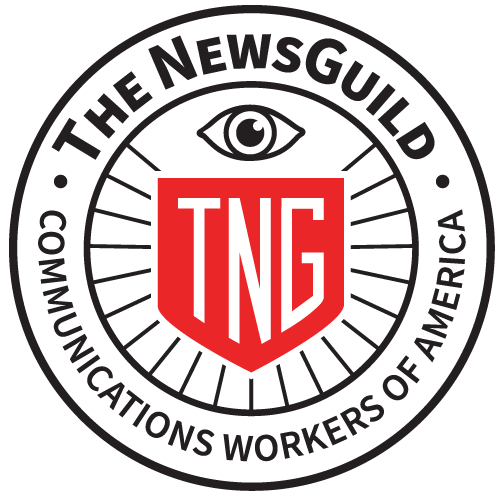March 19, 2019 – The NewsGuild of Greater Philadelphia reports the local has made significant progress in closing a gender-based pay gap at the city’s three major publications over the last three years and says union members are determined to eliminate the gap entirely. The local is also committed to closing a race-based pay gap and increasing diversity in the newsroom.

The local credits its 2017 contract negotiations with the Philadelphia Media Network, the owners of the Philadelphia Inquirer, Philadelphia Daily News and Philly.com, with narrowing the pay gap and improving workforce diversity.
The results of a study commissioned by the union in April 2016 were “staggering,” said Bill Ross, executive director of the local.
It revealed that in all job classifications and in all years-of-service categories where both men and women worked, average salaries for women were lower than for men. Newly hired female employees earned, on average, 16 percent less than their male counterparts and women with 5 to 10 years of service earned 18 percent less. The average gender-based pay gap for all years-of-service categories was 7.7 percent.
Except for sports writers, salaries for people of color were approximately 7 to 9 percent lower than average salaries, the study found.
The makeup of the newsroom was also skewed, especially in its ethnic and racial makeup. Of the 220 staffers of the Philadelphia Inquirer, the Philadelphia Daily News and Philly.com, 62.4 percent were male and 37.6 percent were female. Just 13.2 percent were people of color. (According to a 2011 analysis by the Pew Charitable Trusts based on the 2010 census, racial minorities comprise close to 60 percent of the city’s population.)
By August 2017, the overall gender-based pay gap had decreased to 4.6 percent. Progress continued over the next 14 months, with the disparity narrowing to 4.1 percent by October 2018, when the most recent analysis was performed.
Salaries for newly hired female reporters are now on par with salaries for male reporters with the same level of experience, the local reports, and there has been a significant increase in the number of female employees hired.
However, a sizable gap persists between male and female editors with 15 to 20 years of service, the local reports, with male editors making an average of approximately $12,000 more per year than female editors. The average salary for newly hired female editors is less than 1 percent lower than newly-hired male editors.
The pay gap for people of color has narrowed only slightly, to an average of about 5 to 7 percent.
Contract Negotiations Make the Difference
During 2017 bargaining, the Guild consistently highlighted the inequities. The union proposed individual pay adjustments to address the disparities, an examination of recruitment practices and re-establishment of a Newsroom Diversity Committee.
Management was keenly aware of the potential for embarrassment that evidence of pay disparities could cause and assured the union it would address the matter.
Union leaders kept up the pressure, sharing study results with union members and reaching out to potential allies. The Guild sought support from the board of directors of the foundation that runs the papers, and met with David Boardman, dean of Temple University’s School of Media and Communications, who was reportedly “appalled” by what he heard.
In contract negotiations, pay equity was front and center.
Management responded by granting women larger discretionary increases than it had in the past – and more of them – with salary increases totaling approximately $200,000 in 2017 and close to $70,000 in 2018. Management also began offering higher starting salaries to new female employees.
As a result of the 2017 negotiations, the company empowered a joint Labor-Management Diversity Committee to develop a new hiring policy that calls for aggressive recruitment of minority candidates. The foundation funded nine fellowships for diverse candidates, “but there is still a long way to go in improving diversity in the newsroom,” Ross said, “and we intend to address it.”
As of the October 2018 study, there were a total of 198 newsroom employees; 111 (56%) males; 87 (44%) females and 38 (19.2%) minorities. These figures reflect a 6 percent increase in women employees and a 6 percent increase in minority employees.
Going forward, the local is recommending the following to management:
- Consideration of individual pay adjustments for female editors with 15-20 years of service.
- Examination of salaries for both male and female minority staffers in all job classifications and years of service.
- Comparison of the salaries of female and male reporters and columnists with 0-5 years of service. Although the gap is closing, it hasn’t been eliminated, the local points out.
- A two-year plan, including:
-
- Pay equity adjustments
- Performance-based merit increase criteria
- Minority recruitment and retention with a target goal of 30 percent by end of 2020.

